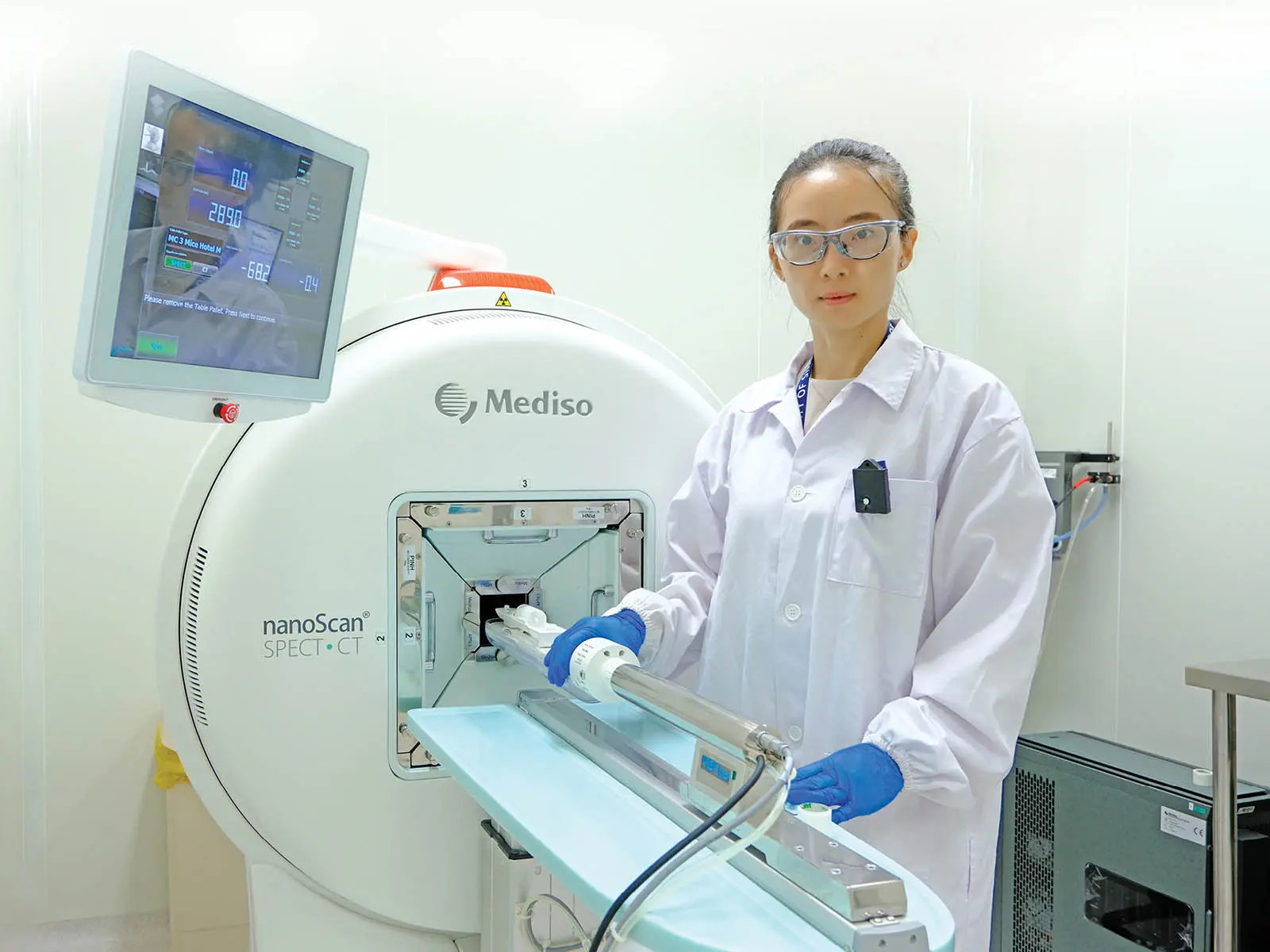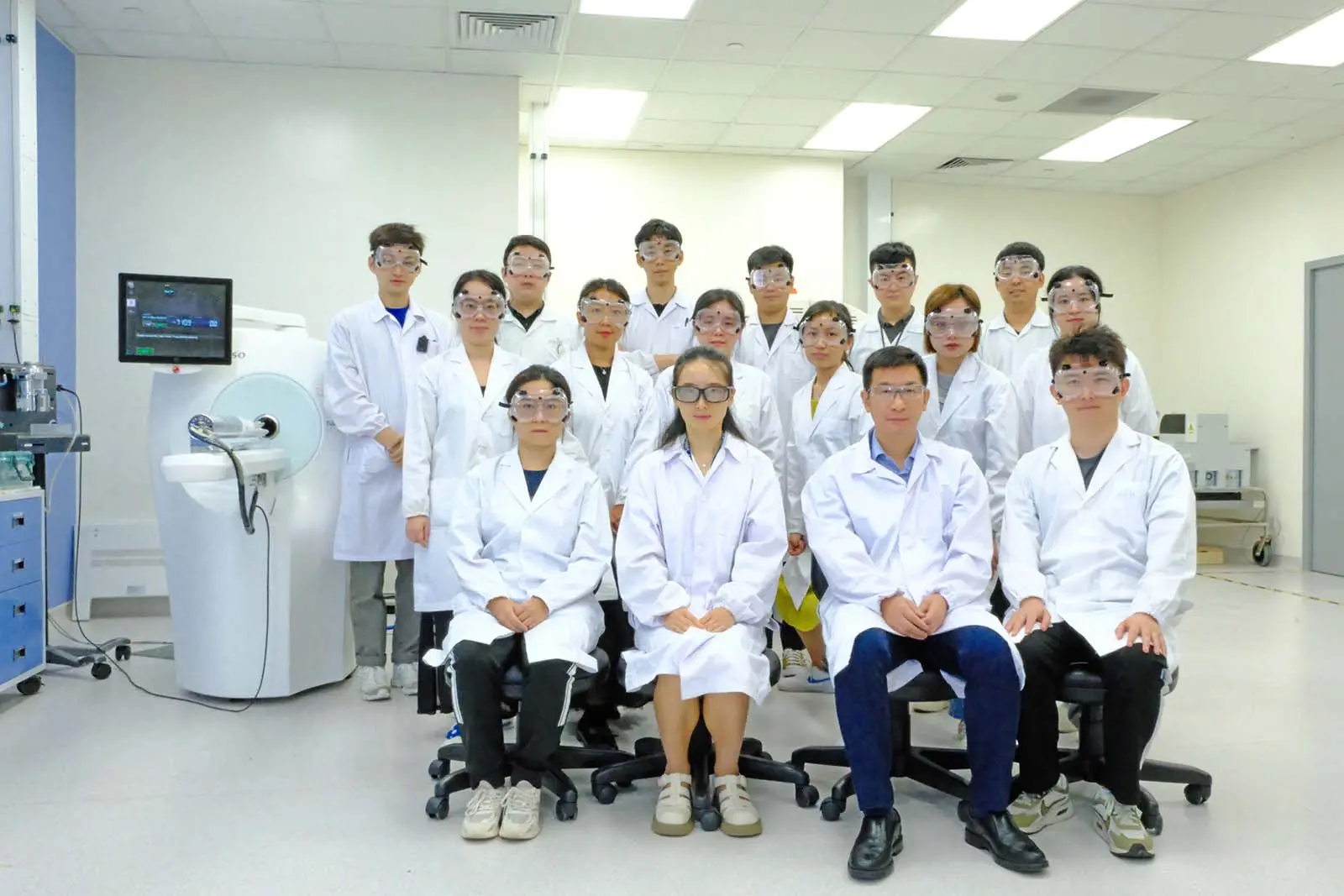
Issue 52
Nov 2024
INSIGHTS

Cancer diagnosis is often considered a life-altering event, significantly impacting patients and their families. According to global cancer statistics, cancer remains one of the leading causes of morbidity and mortality worldwide, with millions of new cases diagnosed each year.
The advent of nuclear medicine has significantly enhanced the therapeutic and diagnostic landscape for several malignancies. Traditionally, the diagnosis and monitoring of cancer has relied on clinical symptoms, biomarker testing, and radiological imaging techniques such as MRI and CT scans. However, these methods have limitations; diagnostic challenges arise due to varied symptoms based on tumour location and functionality. Cancerous cells may produce different biochemical markers, and tumours may not be visible on traditional imaging modalities until they reach an advanced stage. Biopsies, while informative, are not always feasible. Modern medical facilities combine Single Photon Emission Computed Tomography (SPECT) and Positron Emission Tomography (PET) with CT for anatomical reference. These imaging modalities are evaluated based on sensitivity, specificity, and accuracy. PET, in particular, offers superior sensitivity, providing enhanced spatial and temporal resolution compared to SPECT. The traditional PET tracer, 18F-fluorodeoxyglucose (18F-FDG), detects increased glycolytic activity but lacks specificity for malignancies.
Consequently, various other tracers have been developed to improve image contrast and specificity.
Radiotheranostics is an emerging field that combines therapeutic and diagnostic capabilities within a single platform, allowing for a seamless transition from diagnosis to treatment. The same molecules used for imaging with positron emitters in PET scans can be labelled with therapeutic radionuclides, providing a targeted approach to both diagnose and treat cancer.
“Radiotheranostics with molecular imaging and molecular targeted radioligand therapy (RLT) represents a promising advancement in both cancer diagnosis and treatment. By targeting specific membrane proteins overexpressed in malignancies, radioligands can deliver radionuclides directly to cancer cells. This makes RLT a highly effective treatment option for tumour therapy,” explained Assistant Professor Jingjing Zhang from the Department of Diagnostic Radiology at the Yong Loo Lin School of Medicine, National University of Singapore (NUS Medicine). “Unlike external beam radiation therapy approaches, which target tumours from outside the body, radioligand therapy involves giving targeted radiation intravenously or sometimes locally to destroy tumour cells while minimising the impact on surrounding healthy tissue.”

Prof Xiaoyuan Chen (front row, third from left), Asst Prof Jingjing Zhang (front row, second from left) and the research team in NUS Theranostic Centre of Excellence. Photo Credit: Tianzhi Zhao
Over the last decade, radioligand therapy has gained recognition as a viable alternative to traditional cancer treatments, with proof-of-concept provided by, for example, the FDA-approved LUTATHERA® for neuroendocrine tumours and PLUVICTO® for treating metastatic castration-resistant prostate cancer. Recently, major research efforts in the field have been directed towards discovering new theranostic targets, optimising the current radiopharmaceuticals for better efficacy, and, most importantly, accelerating the translation of these novel radiotracers from bench to bedside for clinical use.
A nuclear medicine physician and researcher in radiotheranostics, Asst Prof Jingjing Zhang is leading a group at the Theranostics Centre of Excellence and Clinical Imaging Research Centre to bridge preclinical studies with pilot clinical translational research for developing leading theranostic molecular probes. The team has a particular interest in targeting the emerging tumour microenvironment, fibroblast activation protein (FAP), which is overexpressed in over 90% of epithelial solid cancers. “As part of our group’s main research focus, we are addressing the challenges associated with FAP-targeted radioligands, such as optimising tumour-specific targeting and retention time. It is essential to match therapeutic radioligands’ biological and radioactive half-lives to ensure effective treatment.
Radiotheranostics with molecular imaging and molecular targeted radioligand therapy (RLT) represents a promising advancement in both cancer diagnosis and treatment. By targeting specific membrane proteins overexpressed in malignancies, radioligands can deliver radionuclides directly to cancer cells. This makes RLT a highly effective treatment option for tumour therapy.”
Misalignment can result in suboptimal therapeutic effects or increased toxicity,” said Asst Prof Zhang, who has been named Young Researcher of the Year at NUS Medicine.
To improve the tumour targeting efficiency and increase tumour uptake and circulation time, the group developed a series of new drugs, such as conjugating an albumin-binding moiety. The lead compound, Evans-blue (EB)-FAP inhibitor (FAPI) (LNC1004), demonstrated substantial superiority over the current FAPIs when radiolabelled with a therapeutic radioisotope, lutetium-177 (177Lu).
A sponsored Phase I clinical trial in advanced solid tumour patients is ongoing in collaboration with the National University Hospital. The team is currently working on another compound with a dual-targeting design for both FAP and Integrin αvβ3, FAPI-RGD (LNC1007), radiolabelled with Gallium-68 (68Ga). This heterodimeric structure is promising in diagnosing several solid tumours with a potential benefit for higher sensitivity to heterogeneous lesions than FAPI derivatives alone. The works have been published in Theranostics, Journal of Nuclear Medicine, European Journal of Nuclear Medicine and Molecular Imaging, and Clinical Nuclear Medicine. This novel diagnostic PET radiotracer, 68Ga-LNC1007, received the US Food and Drug Administration (FDA) Investigational New Drug (IND) authorisation and is launching its official Phase I trial in Singapore, with the Clinical Imaging Research Centre (CIRC) at NUS Medicine as its main site, under the leadership of director, Professor Pek-Lan Khong.
Our research in the field of molecular imaging, particularly within cancer theranostics, is leading the way with the use of an integrated approach. These collective advancements in molecular imaging are ushering in a new epoch of medical treatments—where the personalised care of patients is not a distant possibility but an immediate reality, promising a future of more effective, efficacious, and patient-tailored therapeutic interventions.”
The team’s other research interests include addressing the heterogeneity of the tumour microenvironment and radiation resistance, optimising the pharmacokinetics of radiopharmaceuticals, exploring the use of different radionuclides, such as alpha emitters (actinium-225, lead-212, etc.), and discovering novel molecular targets.
In May 2023, a new research platform, the Theranostics Centre of Excellence (TCE), was strategically established with support from NUS Medicine and the Nanomedicine Translational Research Programme (TRP). Headed by Professor Xiaoyuan Chen, Nasrat Muzayyin Professor in Medicine and Technology, and co-led by Asst Prof Zhang, the Centre aims to spearhead the advancement of theranostics by pioneering innovative research and technology, translating discoveries into transformative clinical solutions, and fostering interdisciplinary partnerships. The Centre has a well-equipped research facility with an integrated imaging platform consisting of nanoSPECT/CT, nanoPET/MRI, microPET/CT, Second Near-Infrared bioimaging (NIR-II), IVIS spectrum in vivo imaging system, ultrasound/photoacoustic imaging (PAI), and so on. It is also a leading platform for radiopharmaceutical development with a chemical synthesis unit, a radiolabelling hot lab (radio-HPLC, Radio-iTLC, gamma counter), a tissue culture room, and an animal holding room.
“Our research in the field of molecular imaging, particularly within cancer theranostics, is leading the way with the use of an integrated approach. These collective advancements in molecular imaging are ushering in a new epoch of medical treatments—where the personalised care of patients is not a distant possibility but an immediate reality, promising a future of more effective, efficacious, and patient-tailored therapeutic interventions,” said Prof Chen.
The research team is collaborating actively with researchers from other TRPs and the industry to fulfil the mission of developing personalised drugs for theranostics. Joint efforts with local healthcare professionals and global institutions promise to enhance the efficacy of treatments, increase the accuracy of molecular imaging, expand the applications of radiotheranostics, and ultimately—improve cancer patient outcomes.
More from this issue



